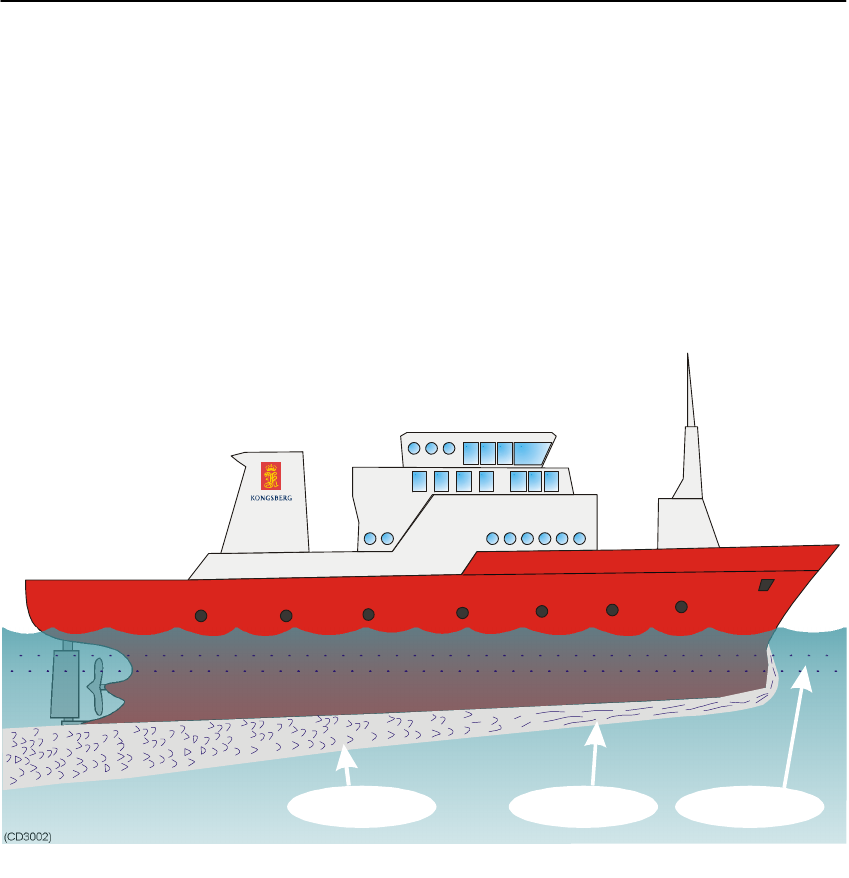
Simrad EQ60
174
857-164342 / Rev.C
layer is thin underneath the forward part of the vessel, and
increases in thickness as it moves towards aft. If the sides of the
hull are steep, some of the air bubbles in the boundary layer may
escape to the sea surface along the vessel sides. It is our
experience that a wide and flat bottom, with a rising angle less
than around 13 degrees, is prone to giving air problems for the
transducer. In any case a transducer location in the forward part
of the hull is preferred in order to minimise the influence of the
boundary layer.
Figure 16 Sketch of the boundary layer underneath the vessel.
(CD3002)
Turbulent flow Laminar flow
Aerated water
Propeller noise
The propulsion propeller is the dominant noise source on most
fishing vessels, research vessels, merchant vessels and pleasure
crafts. The noise is transmitted through the sea water. Therefore
the transducer should be placed far away from the propeller,
which means on the fore part of the hull. Positions outside the
direct line of sight from the propeller are favourable. On small
vessels with short distances it is advised to mount the transducer
on that side of the keel where the propeller blades move
upwards, because the propeller cavitation is strongest on the
other side. The cavitation starts most easily when the water
flows in the same direction as the propeller blade, and that is to
some degree the case at that side of the keel where the propeller
blades move downwards.
Bow thruster propellers are awful machines. When they are in
operation, the noise and cavitation bubbles make the echo


















